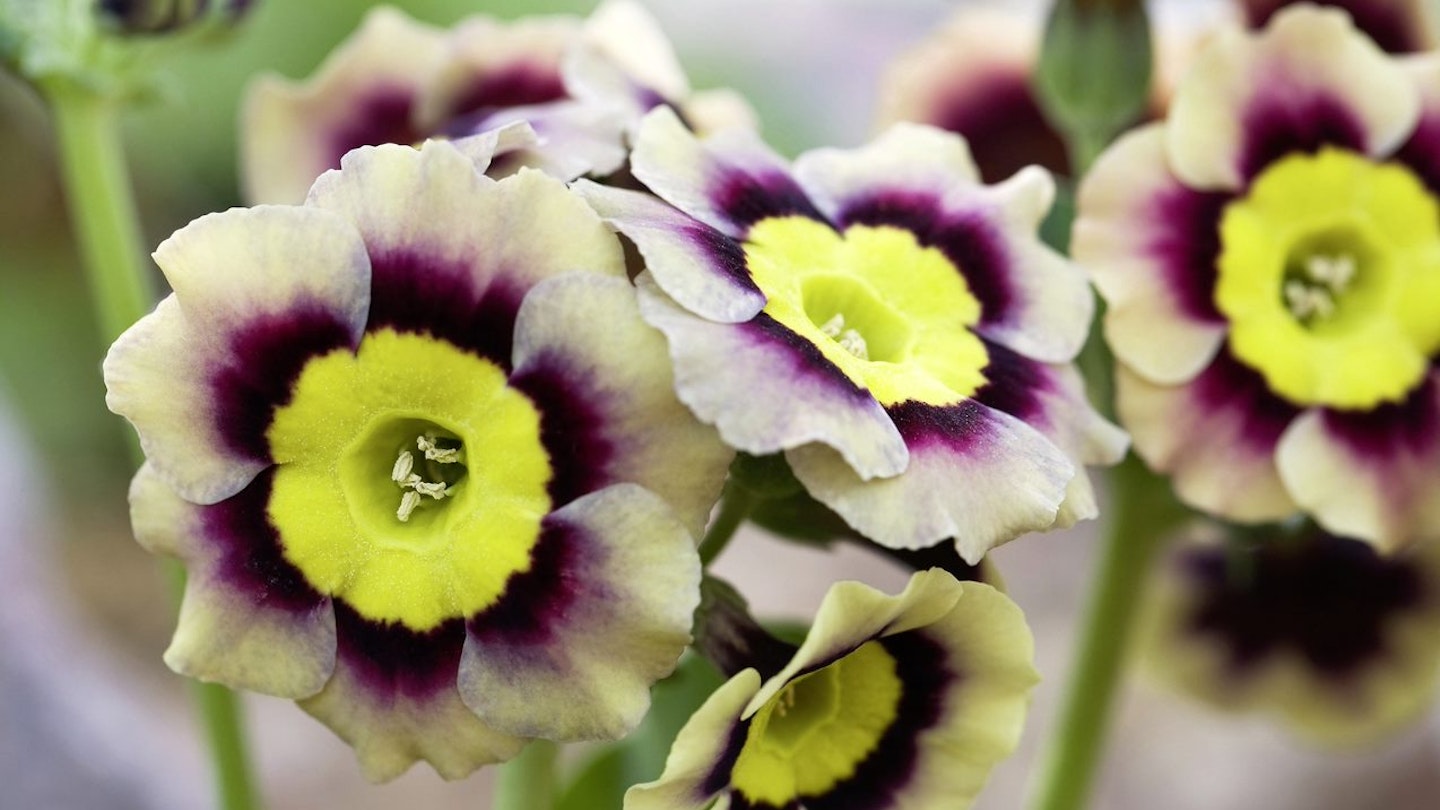Auriculas are among the most treasured of our spring flowers.
These tufted, evergreen primulas originally come from the mountains of Europe, where they grow among limestone rocks. The wild species have small, rounded or scalloped leaves, sometimes covered in a creamy meal and heads of circular, five-petalled flowers, often with a white eye. Hundreds of hybrids have been created by crossing it with closely-related species P. hirsuta.
The auricula as we know it was brought into cultivation at the end of the 18th century, grown by ordinary folk as botanical treasures. Auricula shows became popular and formal societies were formed.
Auriculas are generally split into border, alpine, show, double and striped varieties.
The border and alpine forms are robust enough for use in the general garden, where they’ll grow in moist, but well-drained soil in semi-shade. They hate hot sun and dry soil and will scorch, or even die, if becoming seriously droughted.
The show varieties are best grown in pots in a cold greenhouse to protect the meal or farina on their leaves and especially the flowers, which is soon washed off by rain.
When growing them in pots, clay or plastic, use a multi-purpose compost with added John Innes and add more grit or Perlite to further improve drainage. They need to be kept damp, but not wet over winter, gradually increasing the amount of water as they flush with new growth and the flower buds appear. Under glass they’re prone to greenfly and also attacks by vine weevil grubs.
For more information contact the National Auricula and Primula Society.
Great auricula varieties to try
Old Gold Dusty Miller
Old border variety reliably producing clusters of scented, wavy edged flowers on 22.5cm (9in) stems. From: Drointon Nurseries
Mojave
Very popular show variety producing striking flowers with mealy centre on 20cm (8in) stems in May. From: Hillview Hardy Plants
Victoria de Wemyss
Vigorous alpine variety bred in 1979 and a good perennial. Reliable clusters of flowers on string stems. From: Drointon Nurseries
Joel
Bred in 1952 the flowers of this richly coloured show variety is complemented by heavily dusted foliage. From: Peninsula primulas
Sirius
Bred in 1979 this unusually toned gold-centred alpine variety is equally good in the garden or in pots for showing. From: Hillview Hardy Plants
Rufus
This variety of P. pubescens is often considered a border auricula. Pale green leaves and red flowers make this a winner in the garden. From: Abriachan Nurseries
